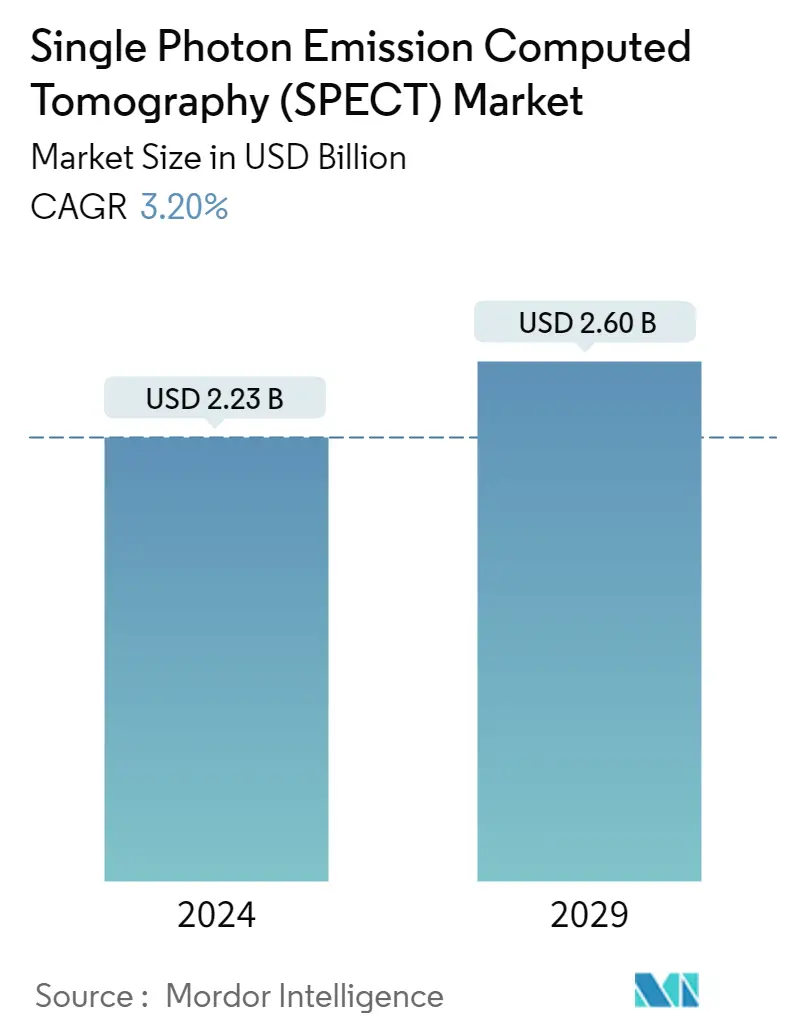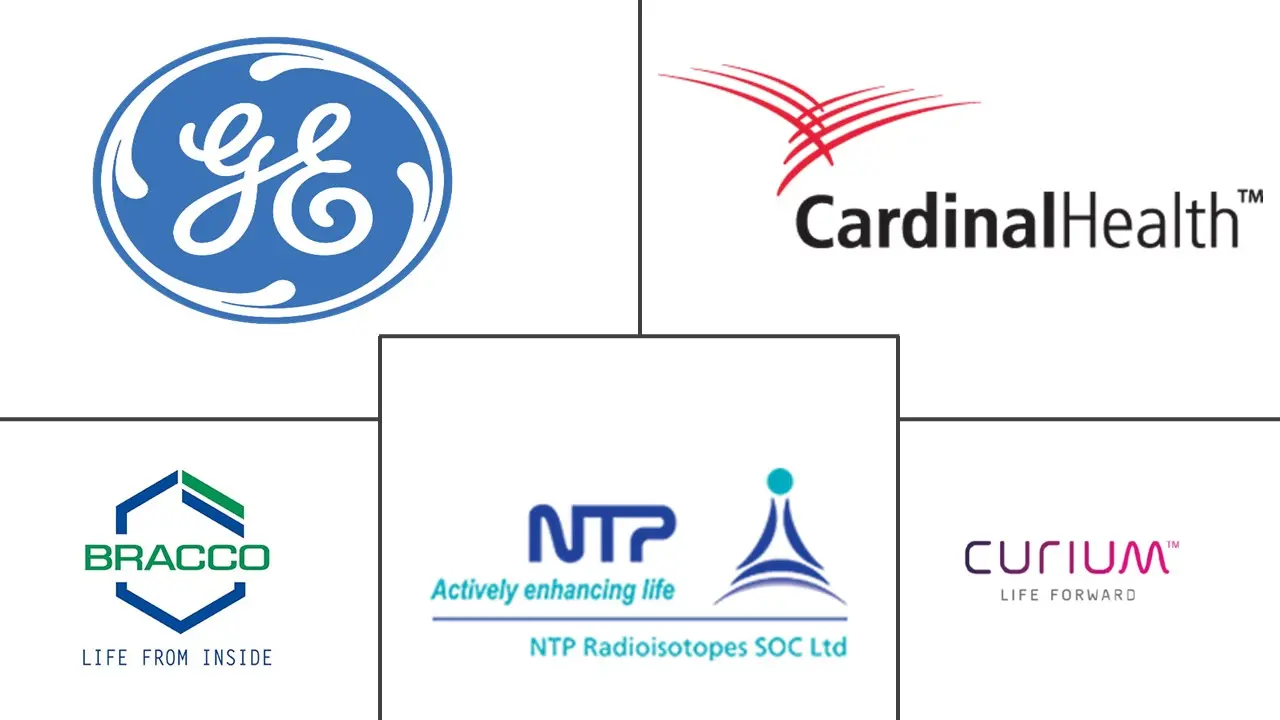Market Size of Single Photon Emission Computed Tomography (SPECT) Industry

| Study Period | 2019 - 2029 |
| Market Size (2024) | USD 2.23 Billion |
| Market Size (2029) | USD 2.60 Billion |
| CAGR (2024 - 2029) | 3.20 % |
| Fastest Growing Market | Asia Pacific |
| Largest Market | North America |
Major Players
*Disclaimer: Major Players sorted in no particular order |
Need a report that reflects how COVID-19 has impacted this market and its growth?
Single-Photon Emission Computed Tomography (SPECT) Market Analysis
The Single Photon Emission Computed Tomography Market size is estimated at USD 2.23 billion in 2024, and is expected to reach USD 2.60 billion by 2029, growing at a CAGR of 3.20% during the forecast period (2024-2029).
COVID-19 has a huge impact on the patients as they became self-selective in a way that they canceled their nuclear imaging procedures, which were categorized as nonessential. This pandemic affected the operations of hospitals and doctors, as they were also prioritizing their procedures and postponed a number of elective surgeries and radiation treatments, due to which there was a decrease in the demand for related SPECT scans. Besides the negative impact of COVID-19, it has created opportunities for players in this field to establish their presence by launching new products or progressing clinical studies in this field. For instance, in November 2020, NanoMab Technology Limited received CTA Acceptance from the Medicines Healthcare products Regulatory Agency (MHRA) to carry out a Phase II clinical Study for its NM-01 product. This study will assess the programmed death-ligand 1 (PD-L1) expression using 99mTc-NM-01 as a SPECT/CT radiotracer and its correlation to PD-L1 expression results based on routine immunohistochemical (IHC) testing in biopsy diagnostic specimens.
Single-photon emission computed tomography (SPECT) is used in the evaluation of disease processes based on functional and metabolic information of organs and cells. The most widely used SPECT systems are based on the anger gamma camera, usually involving dual detectors that rotate around the patient. The application of hybrid equipment and fused techniques has increasing importance in the field of imaging diagnostics. One of the most significant advantages of these methods is the simultaneous use of several modalities, which can give data about the morphological, functional, and molecular changes of the different diseases at the same time.
The rising prevalence of cases of cancer, such as breast cancer and prostate cancer, is likely to enhance the market growth significantly in the future. For instance, as per the report of the American Cancer Society, in 2021, there were an estimated 1,898,160 new cancer cases diagnosed and 608,570 cancer deaths in the United States.
The integration of X-ray computed tomography (CT) into SPECT recently emerged as an essential diagnostic tool in medical imaging, where anatomical details may delineate functional and metabolic information. For instance, according to research published in January 2022 in the American Association of Physicists in Medicine titled "Optimization of 99mTc whole-body SPECT/CT image quality: A phantom study," single-photon emission computed tomography (SPECT) combined with X-ray computed tomography (SPECT/CT) yields information on both physiology (SPECT) and anatomy (CT).
Furthermore, there is an increasing trend of dual-modality systems and organ-specific systems to enhance the diagnostic capability of the equipment. In the past several years, there has been growing utilization of PET/CT, owing to the fact that functional and morphologic correlative images produced by this methodology improve diagnostic accuracy, and it is one of the factors that can impede the growth of the SPECT equipment market. However, the shorter half-life of radioisotopes and stringent regulatory guidelines are a few market restraints that hinder the growth of the market. However, owing to all factors mentioned above, the market is expected to witness satisfactory growth over the forecast period.
